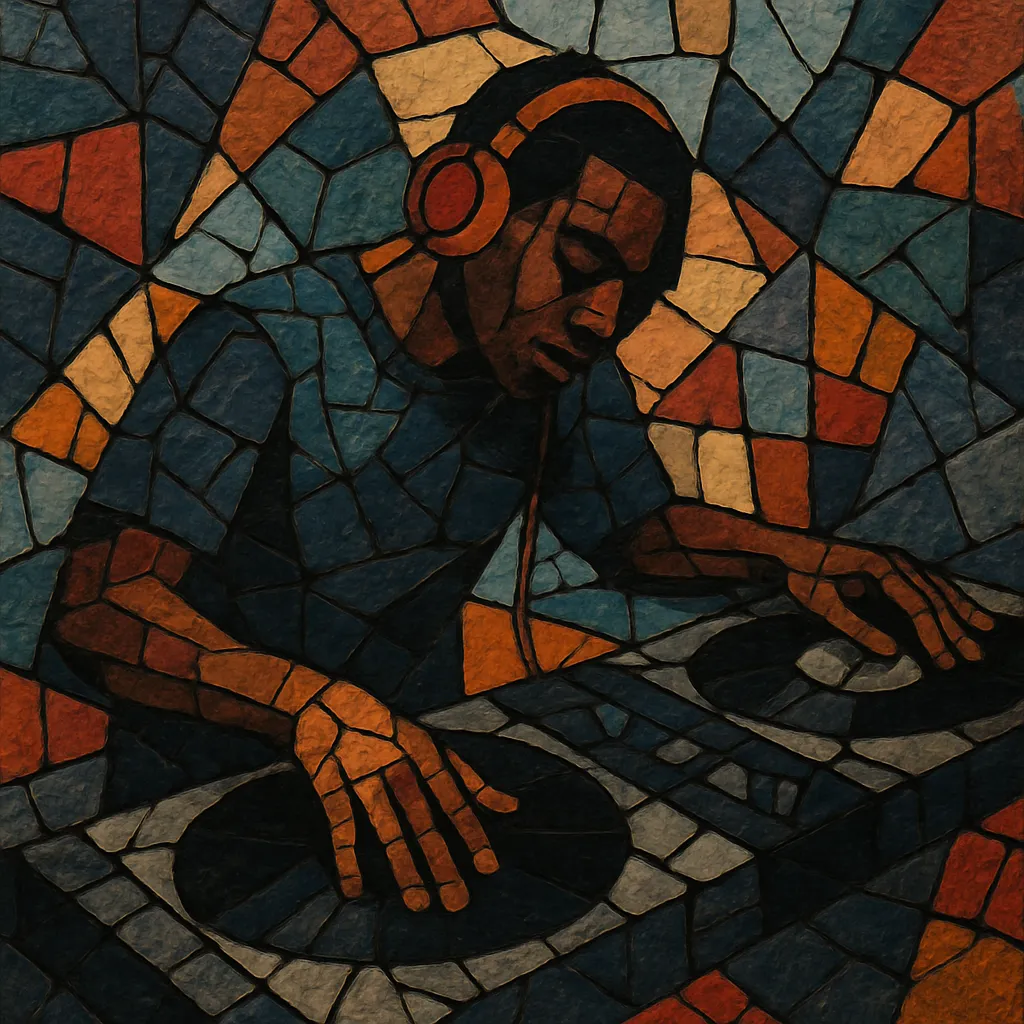
Broken beat (often shortened to "bruk") is a rhythm-forward, jazz- and funk-inflected style of club music that emerged from West London. Its defining feature is a heavily syncopated, off‑kilter drum feel that fractures straight 4/4 time without abandoning dance‑floor energy.
Producers combine swung, jittery percussion with warm, soulful chords, boogie/funk basslines, and frequent live instrumentation. The harmony language often borrows from jazz (extended chords, rich voicings), while the groove draws from house, drum & bass, UK garage, hip hop, and boogie. Typical tempos sit around 118–130 BPM, with pronounced swing and micro‑timing that create a lurching, propulsive pulse.
Broken beat coalesced in the late 1990s in West London as DJs and producers steeped in jazz, funk, boogie, house, drum & bass, UK garage, and hip hop began emphasizing irregular, highly swung drum programming. The style retained club‑music momentum but favored syncopation, ghost notes, and loose micro‑timing over rigid 4/4.
The community formed around the Co‑Op club nights (first at the Velvet Rooms, then at Plastic People), where key figures—many connected to 4hero and the 2000Black camp, IG Culture’s projects, and the Bugz in the Attic collective—built a shared language and audience. Independent labels and crews such as 2000Black, BitA (Bugz in the Attic), Main Squeeze, People, and Laws of Motion circulated 12‑inch releases, white labels, and remixes, cementing a recognizable "bruk" signature: broken drum grids, jazz‑soul harmony, and boogie‑styled bass.
Through the early 2000s, broken beat gained international traction via remixes for nu‑jazz, soul, and R&B artists, alongside original club cuts. The sound’s musicianship—Rhodes pianos, live bass, percussion, and analog synths—helped it bridge DJ culture and live band settings. Compilation series and cross‑scene collaborations carried the style from London to Europe, Japan, and beyond.
As dubstep, minimal techno, and later bass mutations took center stage in the mid‑to‑late 2000s, broken beat’s visibility dipped, but its rhythmic DNA seeped into UK club culture. In the 2010s and 2020s, a revival—spearheaded by veterans and a new wave of producers convening around Co‑Op Presents/Selectors Assemble and 2000Black—reaffirmed the style’s vitality, updating its palette while preserving the signature off‑grid swing and jazz‑funk core.

